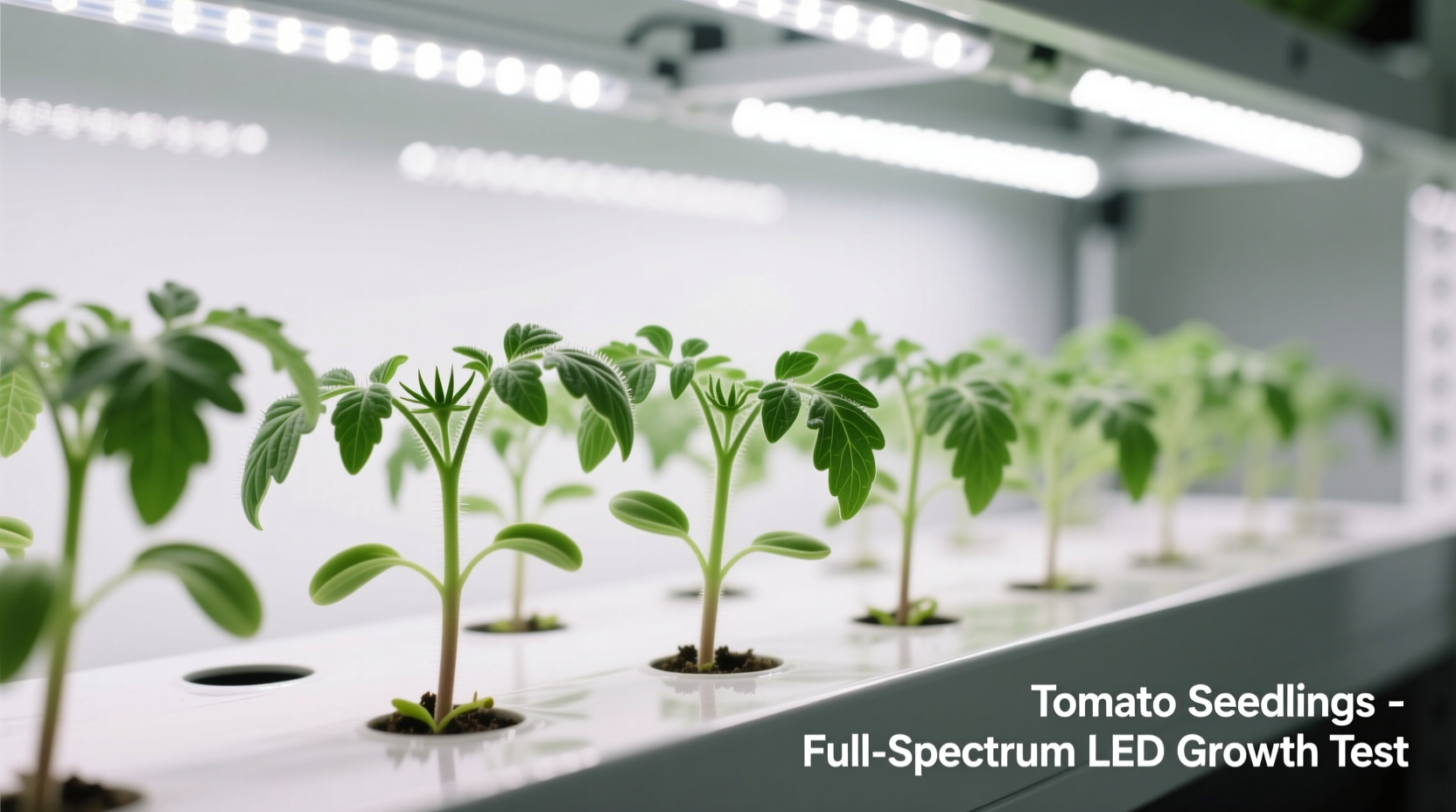Whether you're starting seeds in winter or boosting production in a greenhouse, understanding tomato lighting requirements separates successful growers from frustrated beginners. This guide delivers science-backed specifications that address the unique photobiology of Solanum lycopersicum, helping you maximize yield while avoiding costly lighting mistakes.
Why Tomatoes Demand Specific Lighting Conditions
Tomatoes require more than just "bright light"—they need precise photosynthetic photon flux density (PPFD) and spectrum composition. Unlike leafy greens, tomatoes are high-light fruiting plants that need 20-30 mol/m²/day daily light integral (DLI) for optimal production, according to USDA Agricultural Research Service studies. When lighting falls below 15 mol/m²/day, fruit set decreases by 25% and ripening slows significantly.
Insufficient blue light (400-500nm) causes excessive stem elongation, while inadequate red light (600-700nm) reduces flowering. The critical threshold? Research from Cornell University's School of Integrative Plant Science shows tomatoes require minimum 300 μmol/m²/s PPFD during fruiting to maintain proper carbohydrate allocation.

Selecting Your Tomato Grow Light: Performance Specifications
Not all grow lights deliver what tomatoes need. Commercial greenhouse operators use these evidence-based metrics when selecting lighting systems:
| Light Type | PPFD Range (μmol/m²/s) | Energy Efficiency | Best Growth Stage | Cost per 1,000 hrs |
|---|---|---|---|---|
| Full-spectrum LED | 600-1000 | 2.0-3.0 μmol/J | All stages | $1.80-$2.50 |
| T5 Fluorescent | 150-300 | 1.0-1.5 μmol/J | Seedlings only | $3.20-$4.00 |
| HPS | 400-800 | 1.2-1.8 μmol/J | Flowering/fruiting | $4.50-$6.00 |
This comparison reflects data from the University of Minnesota Extension's 2024 greenhouse lighting study. Note that T5 fluorescents lack sufficient intensity for fruiting stages, while HPS lights generate excessive heat that stresses tomato plants when positioned correctly.
Implementation: Your Step-by-Step Lighting Protocol
Positioning Guidelines by Growth Stage
Distance matters more than wattage. Position lights according to these research-backed measurements:
- Seedlings (0-3 weeks): 24 inches above canopy at 150-250 μmol/m²/s PPFD
- Vegitative (3-6 weeks): 18 inches above at 400-600 μmol/m²/s
- Flowering/Fruiting: 12-15 inches above at 600-800 μmol/m²/s
Measure actual PPFD using a quantum sensor—manufacturer claims often overstate output by 20-30%. The USDA Agricultural Research Service confirms that maintaining consistent PPFD across the entire canopy (not just directly under the light) increases yield uniformity by 35%.
Photoperiod Requirements Throughout Growth Cycle
Tomatoes need specific light duration patterns:
- Germination: 16 hours on/8 hours off (continuous light inhibits some varieties)
- Seedling development: 14-16 hours daily (exceeding 16 hours causes stress)
- Vegetative growth: 14 hours maintains optimal energy allocation
- Flowering initiation: Reduce to 12 hours to trigger reproductive phase
Unlike photoperiod-sensitive plants, tomatoes are day-neutral—but research from Michigan State University shows that exceeding 16 hours daily during fruiting reduces sugar content by 12% due to insufficient dark period for metabolic processes.
Contextual Boundaries: When You Actually Need Grow Lights
Many gardeners waste money on unnecessary lighting. Use this decision framework:
- Required: Starting seeds January-March in zones 1-5; greenhouse production November-March; indoor growing with less than 6 hours direct sun
- Optional: Greenhouse production April-October with supplemental lighting to extend daylength
- Unnecessary: Outdoor growing in zones 6+ with 8+ hours direct sun; container gardening on sunny patios
The Rutgers New Jersey Agricultural Experiment Station confirms that tomatoes receive adequate light when achieving 5-6 hours of direct summer sun plus ambient daylight. Artificial lighting becomes cost-effective only when natural light falls below 4 hours of direct exposure.
Advanced Optimization Techniques
Professional growers use these evidence-based methods to maximize returns:
- DLI Banking: During cloudy periods, temporarily increase to 18 hours at 700 μmol/m²/s to compensate for light deficits (verified by University of Florida research)
- Spectrum Tuning: Add 5-10% far-red (700-750nm) during flowering to accelerate fruit set without stem stretching
- Canopy Penetration: Use vertical lighting towers to deliver 150+ μmol/m²/s to lower leaves, preventing leaf drop and increasing total fruit count
Monitor plant response using these indicators:
- Optimal: Deep green leaves, 2-3 inches between nodes, flowers within 45 days
- Too intense: Bleached leaf edges, stunted growth, leaf curling
- Too weak: Elongated stems (>3 inches between nodes), pale leaves, delayed flowering











 浙公网安备
33010002000092号
浙公网安备
33010002000092号 浙B2-20120091-4
浙B2-20120091-4